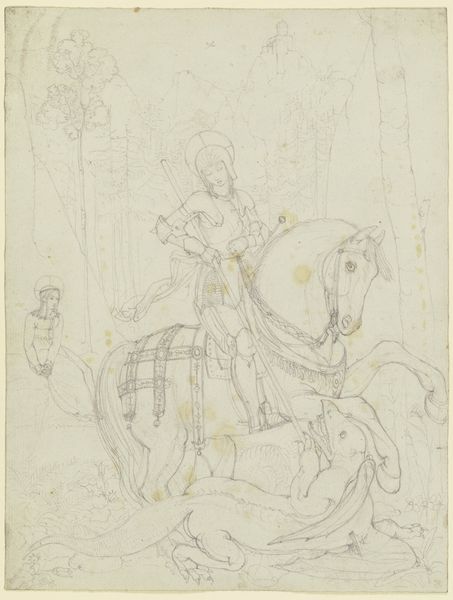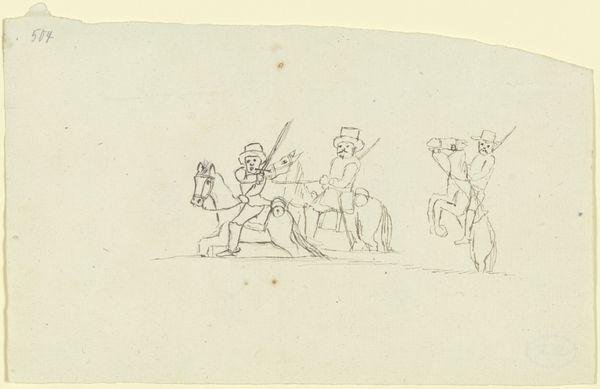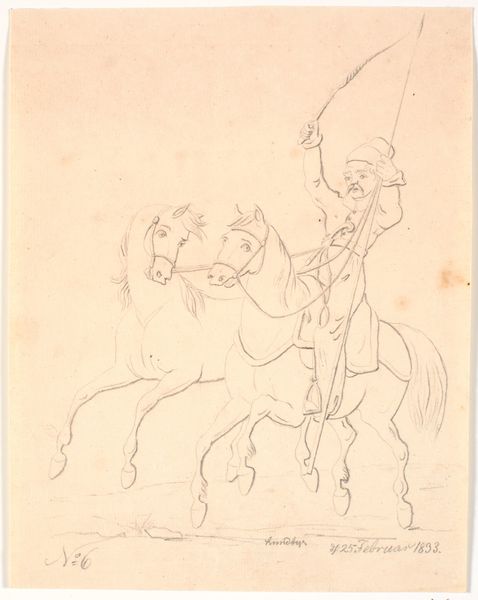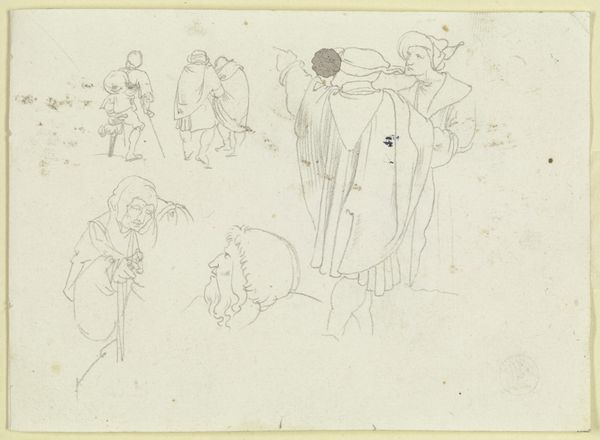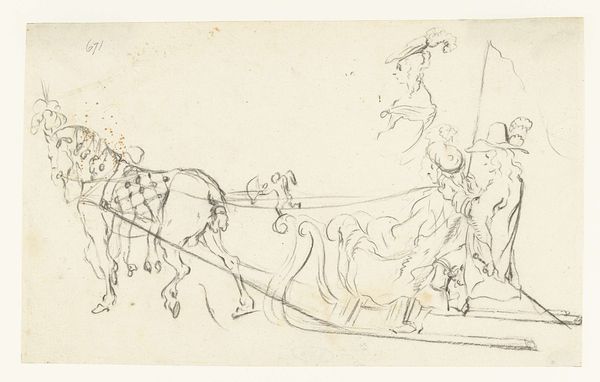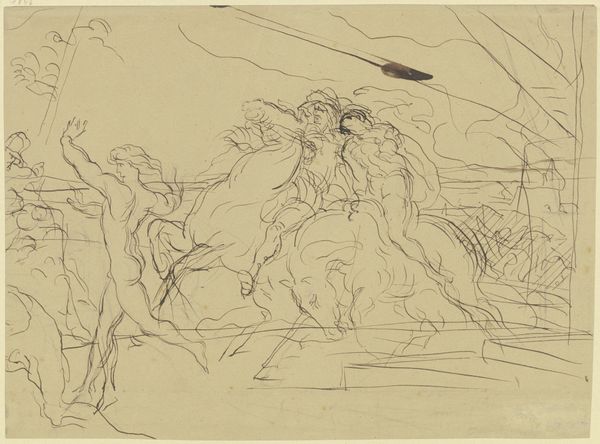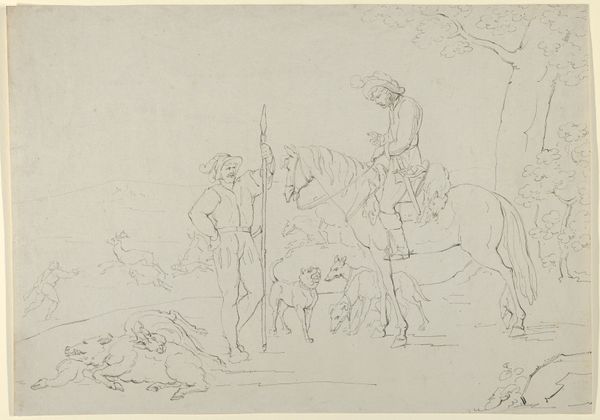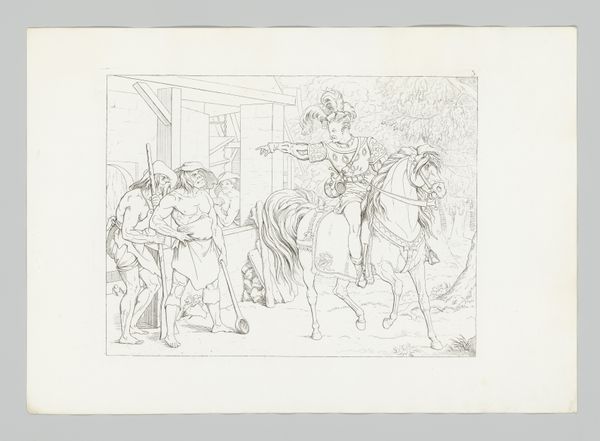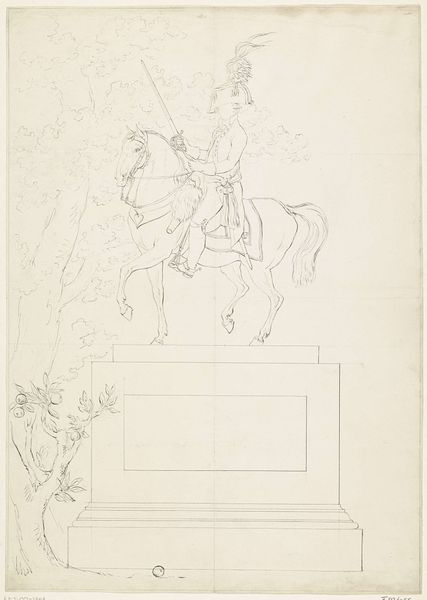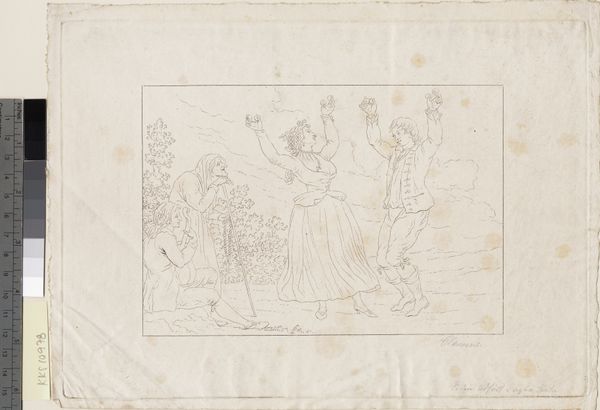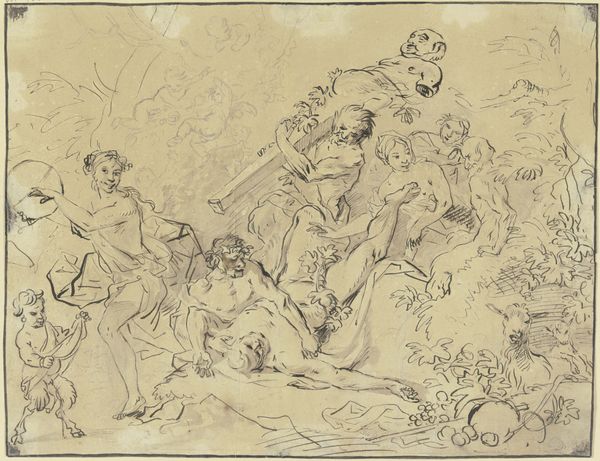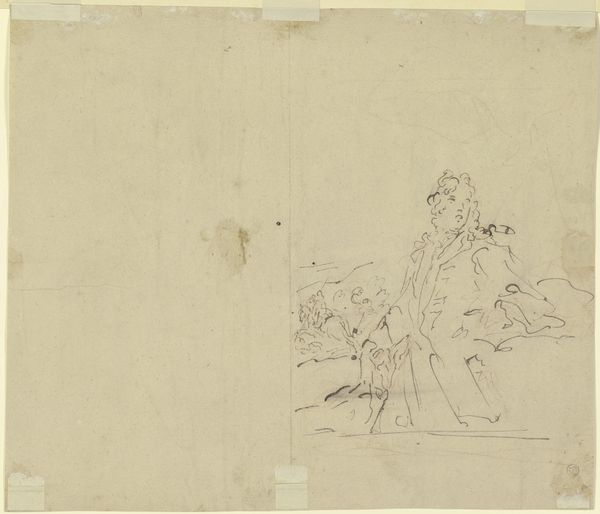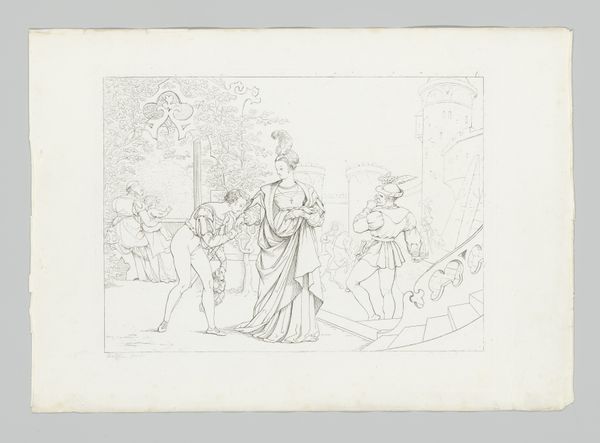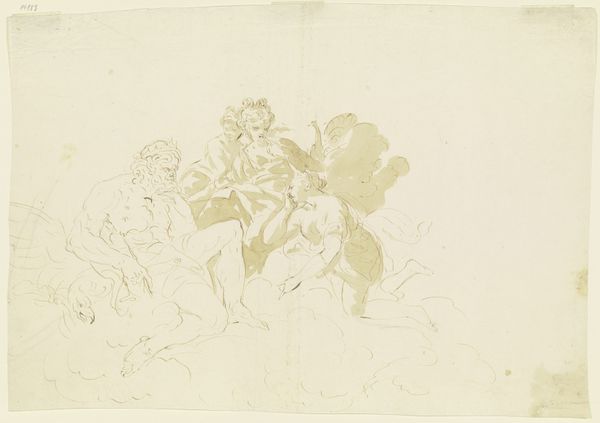
drawing, ink
#
drawing
#
narrative-art
#
figuration
#
ink
#
romanticism
Copyright: Public Domain
Editor: So, here we have Franz Pforr’s "Das Beinhaus von Pfeffel," a drawing made around 1808 with ink. I am struck by how unsettling this piece feels. What draws your eye in this drawing? Curator: Well, considering the historical moment, we need to remember that Pforr and his peers were operating in a time of immense political and social upheaval, the Napoleonic wars and the dissolution of the Holy Roman Empire were happening all around him. Now, note how the rider presents himself. He’s clearly an authority figure, elevated literally on horseback, arriving, disrupting… Editor: The commoner by the bone house looks shocked, intimidated. It is such a dramatic juxtaposition. Curator: Exactly! How does this drawing function as a piece of political commentary? Think about the rise of Romanticism, often viewed as a rebellion against Enlightenment ideals and Neoclassical aesthetics. Artists like Pforr were questioning established norms. The depiction of power and its encounter with everyday life – what commentary is Pforr trying to make on the social hierarchy of his era by portraying a powerful rider encountering what could be seen as a grave keeper in front of this house of bones? Editor: So it's a deliberate disruption, not just in the scene but in the artistic conversation as well. Very interesting. Curator: Precisely. This drawing is participating in the reimagining of society itself, with new codes and critiques emerging through imagery. Considering the materials and the time period, do you think that helped express those issues? Editor: The somewhat rough and ready feel of the ink drawing certainly seems like an artistic challenge to the polished works the Academy at the time would favour. Curator: Absolutely! Thinking about that tension certainly helps open the drawing up! Thanks for pointing that out.
Comments
No comments
Be the first to comment and join the conversation on the ultimate creative platform.
